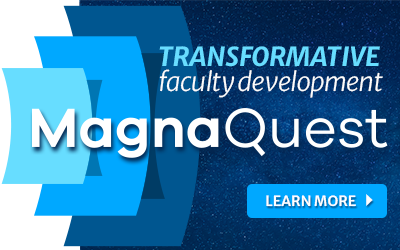With nontenure-track faculty now comprising 70 percent of the faculty workforce, academic leaders face daunting challenges in creating proactive workplace strategies that address this new reality. Even though more than a quarter of nontenure-track faculty are now in full-time nontenure-track appointments, the majority still teach part time. Despite the urgency of addressing this dramatic shift in the faculty workforce, as we point out in Creating a Tipping Point: Strategic Human Resources in Higher Education (Jossey-Bass, 2013), higher education has been comparatively slow to realize the potential of human resources (HR) in developing strategic talent practices. By contrast, in the private sector, a twenty-year research study (Ulrich et. al., 2008) with 40,000 respondents in 441 companies found that when HR professionals develop high-performance work systems, these practices affect 20 percent of business results. Such practices, however, need to be integrated and systematic to produce these outcomes.
A major difficulty arises in higher education due to the typical organizational structure of HR. HR tends to be viewed almost exclusively as a staff function, generally reports to the chief financial officer, and usually only has responsibility for certain faculty functions such as benefits and retirement. Academic affairs often also houses an academic personnel function, and this bifurcation between academic and staff personnel can be problematic in terms of the development of talent strategies that serve the entire institution. In the new millennium, however, HR needs to work collaboratively with academic affairs to redesign its practices and move from transaction-based, siloed operations to proactive, strategic workforce approaches that build and sustain the adjunct faculty workforce.
In this article, we address two architectural elements of a cohesive talent strategy for adjunct faculty in which HR can add significant value: 1) talent acquisition through recruitment, outreach, and hiring and 2) talent development through a state-of-the-art total rewards strategy.
The first step is to understand the current demographic profile of adjunct faculty. Recent research by Paul Yakoboski of the TIAA-CREF Institute finds that two-thirds work in public institutions and are somewhat evenly spread among institutional types. Yet approximately 70 percent of the community college workforce serves in adjunct appointments. Further, as Yakoboski notes, the average age of adjunct faculty is skewed toward older individuals, with 71 percent over the age of 40. In terms of race and ethnicity, 2014–15 data from the National Center for Education Statistics indicates that of the 529,832 part-time instructional faculty, nearly three-fourths are white (38 percent are white women, 35 percent white men), 5.4 percent are Hispanic, 7.8 percent are African American, and 4.2 percent are Asian American.
At the same time, we know that the student body is becoming increasingly diverse in terms of racial/ethnic diversity as well as in the enrollment of older nontraditional students, part-time students, and low-income and first-time-in-college students. From the standpoint of racial and ethnic diversity, between 1976 and 2012, the percentage of white students has declined from 84 percent to 60 percent, while the percentage of minority students has more than doubled. Given this rapidly changing demographic profile, greater diversity is needed among adjunct faculty to create a more representative faculty workforce, provide role models in the classroom, and prepare students for citizenship and careers in a global society. As a result, we now focus on specific ways that HR professionals can work collaboratively with academic leaders to build a sustainable and diverse adjunct talent pipeline and promote greater inclusion of adjunct faculty in the mainstream of campus life.
Talent acquisition
One of the primary barriers to building a pipeline of diverse and talented adjuncts is the nature of the hiring process. Adjunct hiring usually occurs on an as-needed basis as departments determine the level of enrollment in courses. This decentralized, just-in-time approach that usually takes place through direct appointments by department chairs often has been driven by budgetary cutbacks that have forced academic departments to rely more heavily on a contingent workforce. While speed and efficiency are important, Jennifer Ruth and Michael Berube in their new book, The Humanities, Higher Education, and Academic Freedom: Three Necessary Arguments (Palgrave McMillan, 2015) argue that such ad hoc hiring processes would benefit from greater professionalization. Without a systematic hiring process and formalized criteria, they note that adjunct hiring can result in a kind of patronage when these “at will” faculty members owe their employment to whomever is the department head at the time.
To address both the professionalization and diversification of the adjunct hiring pipeline, HR can help promote greater consistency by partnering with academic leaders in the following ways:
- Analyze jobs in terms of required and preferred qualifications and competencies that align with educational mission and disciplinary goals
- Develop effective sourcing and outreach strategies to attract diverse talent
- Build diverse adjunct pools and advance screening for minimum qualifications
- Define the stages of the adjunct hiring process
- Develop relevant hiring guidelines
- Ensure time-sensitive appointments
Because of the predominance of adjunct faculty, HR departments in community colleges tend to have developed more systematic guidelines and resources, such as the Los Rios Community College District in California that offers a well-developed set of practices and resources. As an example from a private research university, Drexel University’s HR department offers the opportunity to work with HR business partners in recruiting adjuncts as well as provides a systematic presentation of the workflow (http://drexel.edu/hr/atDrexel/employmentOps/adjuncts/).
Total rewards strategy and talent development
Developing a cohesive total rewards strategy for adjunct faculty is a critical institutional approach to retaining adjunct talent. A comprehensive approach to both direct and indirect compensation will create a cohesive system aligned with institutional goals that includes the design of competitive compensation programs, benefits, and retirement plans as well as work/life offerings, recognition and award programs, and professional development opportunities.
According to recent salary surveys, the median salary of adjunct professors is $2,700 per semester course and ranges from an average of $20,000 to $25,000 per year. This relatively low level of pay requires careful institutional analysis in addressing adjunct retention and job satisfaction in light of available budgetary resources. HR professionals can assist in evaluating the value proposition for adjunct faculty by conducting benchmarking surveys that assess market position in relation to peer institutions and by developing salary recommendations that address budget realities while maintaining competitive advantage.
On the benefits side of the equation, some institutions have moved to limit adjunct participation in benefit programs under the Patient Protection and Affordable Care Act by capping course loads. Other institutions have created separate benefit programs with higher deductibles that meet the letter of the law but make enrolling in health care a costly proposition. Such policies require careful review and analysis to determine their impact on retaining adjuncts given their need to sustain a viable income and maintain adequate health care for themselves and their families. Furthermore, at many institutions, office hours are not paid, diminishing the ability of adjuncts to work closely with students. These factors suggest the need for an overall evaluation and systematization of the institution’s policies and pay practices for adjuncts.
Professional development is another important area in which HR can work with academic leaders and teaching and learning centers to offer leading-edge programs that specifically address the needs of adjuncts. Such programs include, for example, orientation programs that feature several follow-up sessions, discussions of academic policy and available teaching resources, classroom technology and online course development, and work/life seminars. Consideration can be given to providing a stipend for orientation and professional development programs because they fall outside of the adjunct faculty workload.
In today’s higher education environment, development of a competitive adjunct talent strategy that optimizes institutional resources while providing greater job satisfaction to part-time faculty is critical to organizational success. The strategic partnership of HR with academic leaders offers the opportunity for the creation of talent approaches that align with educational goals while ensuring the continued contributions of a diverse and talented adjunct faculty workforce.
Alvin Evans and Edna B. Chun, DM are award-winning authors, each with more than two decades of experience in higher education. Edna Chun is chief learning officer and Alvin Evans is higher education practice leader for HigherEd Talent, a national HR and diversity consulting firm.
Reprinted from Academic Leader, 32.6 (2016): 1, 5. © Magna Publications. All rights reserved.



